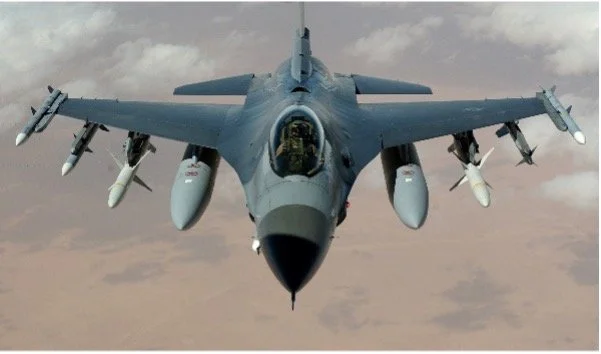
DISARMAMENT TIMES
March 2022
Bruce Knotts, Director, UUA Office at the United Nations
Revisiting Our Values During Perilous Times
The soaring words in the preamble of the Universal Declaration of Human Rights sound like they were drafted by a Unitarian. They were. John Peters Humphrey completed the first draft at the request of Eleanor Roosevelt and shepherded the document to its conclusion in 1948. When I spoke to the UU Congregation in Winnipeg, Manitoba, Canada, I discovered that John Peters Humphrey was a Unitarian and member of the Winnipeg congregation. The preamble reads:
“Whereas recognition of the inherent dignity and of the equal and inalienable rights of all members of the human family is the foundation of freedom, justice and peace in the world,
Whereas disregard and contempt for human rights have resulted in barbarous acts which have outraged the conscience of mankind, and the advent of a world in which human beings shall enjoy freedom of speech and belief and freedom from fear and want has been proclaimed as the highest aspiration of the common people,
Whereas it is essential, if man is not to be compelled to have recourse, as a last resort, to rebellion against tyranny and oppression, that human rights should be protected by the rule of law,
Whereas it is essential to promote the development of friendly relations between nations.”
Credit: Matti, Pexels
These words have held true for decades. The Kellogg-Briand Pact of 1928 outlawed annexing territory by conquest and provided a basis for World War II war crimes trials. Reinforcing the Kellogg-Briand Pact, Unitarian Universalist John Washburn from the United States and Elaine Harvey from Canada led the faith caucus for the establishment of the International Criminal Court with the Rome Statute, which upholds the principles of ending war and violent aggression.
Since 1945, no nation had gained territory through conquest until 2014, when Russia took Crimea from Ukraine and attacked the Donbas region of Ukraine. Since then, over 15,000 Ukrainians have been killed and now the world is facing the greatest threat of nuclear escalation since the Cuba missile crisis.
How did the current situation in Ukraine happen?
In the 1994 Budapest Memorandum, the United States, Russia, and Britain committed “to respect the independence and sovereignty and the existing borders of Ukraine” and “to refrain from the threat or use of force” against Ukraine. With those assurances, Ukraine gave up its 1,900 strategic nuclear warheads.
Russia’s recent invasion of Ukraine has effectively nullified the agreement, and the result threatens to upend the current nuclear nonproliferation regime. In a statement on social media, Senator Marco Rubio of Florida stated that one of the long-term consequences of the invasion would be other countries seeking nuclear weapons as the only method of deterring their neighbors and adversaries from similar actions. Such a trend would completely destroy the Nuclear Nonproliferation Treaty (NPT) and decades of progress negotiating a nuclear weapons-free world.
To protect and preserve all of humankind, Member States must continue to respect the norms set by the NPT and further build upon efforts to prohibit nuclear weapons. To do this, we all need to play a role in ensuring that international norms like self-determination and respect for human rights are upheld. The international community, including governments, civil society, and the private sector, must continue to unite and speak out against the Russian government’s illegal invasion of Ukraine and urge its actions to be in conformity with international law.
Guy Quinlan, President, Lawyers Committee on Nuclear Policy
Cyber Complexity: Tempting Fate Beyond Reason
Credit: ThisIsEngineering, Pexels
At least four times that we know about, the world has come within minutes of accidental nuclear war through human or equipment error. In 2015, the Global Zero Commission, a body of retired military experts headed by a former Vice Chairman of the U.S. Joint Chiefs of Staff, warned that new technologies are shortening warning and decision times, thereby increasing the risk of “catastrophic human error.” Since then, the growth of disruptive technologies has accelerated and rising geopolitical tensions have amplified the danger.
A 2013 study by Pentagon’s Defense Science Board, titled Task Force Report: Resilient Military Systems and the Advanced Cyber Threat, found that military systems were vulnerable, and the government is “not prepared to defend against this threat.” Moreover, the Nuclear Threat Initiative emphasized in its 2018 report, Nuclear Weapons in the New Cyber Age, that cyber threats are expanding at a breathtaking rate and governments are not keeping pace. The report goes on to emphasize that, “nuclear weapons are likely to remain vulnerable to cyber threats regardless of what cyber security improvements are made in the future.”
The growing complexity of technology and cyberspace poses an immense risk to humanity when compounded with “nuclear weapons enterprises.” Numerous points of vulnerability exist at every stage of these enterprises, which includes manufacturing, installation, maintenance, and testing. When factoring current global military activity, such as the ongoing war in Ukraine, the opportunity to disrupt such networks paints a frightening picture for humanity.
To understand the cyber threat, it is important to know why countries and entities are incentivized to conduct attacks in the first place. In his book Cyber Threats and Nuclear Weapons, Herbert Lin outlines that investing in offensive cyber capabilities has distinct advantages. Defenders need to secure vulnerabilities from a very large number of possible attack points. Hackers need to find only one point of weakness. Any malicious actor seeking to compromise U.S. defenses will thus assign and train their best hackers to the task.
Every element of the nuclear enterprise, such as weapons, delivery vehicles, and test equipment, is heavily dependent on computer codes. Computer speed and functionality have increased exponentially, for example a 2020 iPhone is 100 million times faster than the computers used in the 1969 Apollo moon landing. There has also been a corresponding increase in complexity, for example a F-35 fighter uses over 8 million lines of computer code, and greater complexity means more potential attack points.
“The modern nuclear weapons enterprise connects some of the most complex computational systems ever built to the most dangerous weapons in history.” John R. Lindsay, Cyber Operations and Nuclear Weapons, Nautilus Institute 2019
While technological advancements have benefitted humankind, their complexity can be an enemy of security. There is always pressure to add new capabilities and features, but doing so also adds new points of vulnerability. The United Nations Office for Disarmament Research identified that the growing complexity in nuclear enterprises will result in more mistakes and misjudgments from military personnel. This will increase the likelihood of a mistake that could involve detonation of a nuclear weapon, and perhaps ending the world as we know it.
The increasing volume of knowledge on nuclear cybersecurity demonstrates that maintaining “the nuclear enterprise” means living with unavoidable risk of global catastrophe. As the Cartright Commission notes, nuclear weapon states are “relying on a perpetually perfect run of good luck for their survival. By any objective reckoning, this is tempting fate beyond reason.” With geopolitical tensions escalating in Europe and Asia, two regions primed with nuclear powers, humanity is only accelerating the ticking of the doomsday clock. For our survival, Nuclear Weapons States must fulfill their obligations under Article VI of the Nuclear Nonproliferation Treaty and work to disarm their stockpiles.

The Power of a Heartfelt Prayer
Monica Willard, United Religions Initiative (URI)
I grew up with the story that nuclear bombs ended in World War II. Yet, after reading Hiroshima by John Hersey, I realized that victory had another, untold story. That book planted a seed in my heart that has directed me to work for nuclear abolition and to focus on creating a culture of peace.
As a community activist, I was introduced to The Ribbon. Justine Merritt invited people to design cloth panels showing, “What you cannot bear to think of as lost forever in a nuclear war.” These Ribbon panels would circle the Pentagon to observe the 40th anniversary of Hiroshima and Nagasaki in August 1986. Twenty-three miles of Ribbons were tied around the Pentagon and throughout Washington D.C. This art project brought the issue of nuclear weapons into homes, places of worship, schools, and into the hearts of many people. The Ribbon International became an NGO at the United Nations (UN) in 1991 and panels were used at the Earth Summit and other UN events. Ribbons continue to show the hopes, dreams, and prayers of people from around the world. It is a call for protection of our families, communities, the environment, and the future.
In 1985, President Regan and Soviet leader Mikhail Gorbachev agreed that “a nuclear war can never be won and must never be fought.” This was reiterated by President Biden and Putin in 2021. Knowing this is true, why are we not serious about nuclear abolition? In my opinion, people still cling to the justification that nuclear bombs ended World War II. We need to remember that those nuclear bombs were not answered with additional nuclear exchanges. The catastrophic consequences of these weapons of mass destruction are not being addressed and incorporated into our daily lives in a way that demands the shifting of resources away from war and destruction and into known ways to build peace.
We are seeing the dedication of the Ukrainian people as they face the advancing Russian army. The power of nuclear weapons could be used, and it would not save or protect the Ukraine. It would harm and possible destroy the entire planet. No government should have the right to destroy the world. This is our time to demand the end of nuclear weapons.
We must make sure that nuclear weapons are never used again. Nuclear policy must be obeyed and strengthened. Educating people on nuclear issues and policy is essential for the very survival of the planet. We need to talk about nuclear weapons, including the immediate impact it would have on climate change.
Individuals play an important role in the elimination of nuclear weapons. We can use our personal buying power to divest from companies and banks supporting nuclear weapons. We can get and stay informed on the nuclear issues and support the organizations working hard to influence change in policies and military spending. Grandfather Harry Bird shared an important quote that inspired me, “A Heartfelt prayer is more powerful than an atom bomb.” We can pray.
As a member of the United Religions Initiative (URI) Cooperation Circle, Voices for a World Free of Nuclear Weapons, we use The Nuclear Prayer written by our founder and President, The Rt. Rev. William E. Swing. It can be found at www.uri-voices.org. This prayer recognizes that the “fate of the planet is in our hands.”
The other January anniversary few of us think about, but all of us should
Scott Fina
A year out from the January 6, 2021, riot at the U.S. Capitol, Congress, the media and much of our citizenry are obsessing over a potential demise of democracy. While this may be a substantial concern, it could be rendered moot by an existential threat constantly facing American society: nuclear war.
January 22nd marked one year from the 2021 implementation of the United Nations Treaty on the Prohibition of Nuclear Weapons or TPNW. The treaty bans the development, testing, possession, and use of all nuclear weapons. This is momentous news. You wouldn’t know it, however, by what occupies the minds of Americans these days, most of whom are unaware or undisturbed that our nation is breaking international law.
Eighty-six countries have signed onto the TPNW, but the list excludes the countries that actually possess nuclear weapons: the U.S., Russia, China, France, United Kingdom, Pakistan, India, Israel and North Korea, and five other countries that host nuclear weapons on our nation’s behalf - Turkey, Italy, Belgium, Germany and The Netherlands.
Should we be surprised that no nuclear nation complies with the TPNW—especially our own? Not if we look at our nation’s track record on nuclear disarmament.
In 1968, the U.S. signed the Treaty on Non-Proliferation of Nuclear Weapons by which it joined the four other nuclear powers at the time, the Soviet Union (Now Russia), China, France, and the United Kingdom, in promising to get rid of all their nuclear weapons, while most other nations promised to not obtain them. The U.S. has broken its promise—as have the other nuclear powers.
After more than 50 years the world remains awash with nuclear weaponry, despite many subsequent nuclear treaties. These include the Limited Test Ban Treaty (1963), Outer Space Treaty (1967), Anti-Ballistic Missile Treaty(1972), Strategic Arms Limitation Treaty I (1972), Threshold Test Ban Treaty (1974), Peaceful Nuclear Explosions Treaty (1976), Strategic Arms Limitation Treaty II (1979), Intermediate-Range Nuclear Forces Treaty (1987), Strategic Arms Reduction Treaty I (1991), Strategic Arms Reduction Treaty II (1993), Comprehensive Test Ban Treaty (1996), Strategic Offensive Reductions Treaty (2002), and New Strategic Arms Reduction Treaty (2010).
The Federation of American Scientists estimates that nuclear warheads currently number 13,150 globally. These are thermal nuclear weapons, each thousands of times more powerful than the fission weapons the U.S. dropped on Hiroshima and Nagasaki.
The International Campaign to Abolish Nuclear Weapons (ICAN), an international coalition of non-governmental organizations and winner of the 2017 Nobel Peace Prize, warns that even limited nuclear conflicts will cause global devastation. According to ICAN, the detonation of just 1% of the global nuclear arsenal will threaten as many as 2 billion people with famine. A full-out nuclear war between the U.S. and Russia would quickly result in hundreds of millions of deaths and bring about a nuclear winter that will destroy the ecosystems that support life on our planet.
The U.S. has the world’s most powerful nuclear arsenal. According to a study in the “Bulletin of the Atomic Scientists,” it includes 3,800 warheads, 1,800 of which are deployed. The U.S. employs a triad of nuclear delivery systems for these warheads: missiles launched from submarines; land-based intercontinental ballistic missiles (ICBMs); and bombs dropped from jets.
America’s nuclear force is unstoppable. Yet, the U.S. is modernizing its arsenal and delivery systems to be completed by 2046 at a cost of $1.2 trillion. Moreover, according to the latest (2018) U.S. “Nuclear Posture Review” issued by the U.S Department of Defense, our nation has never adopted a “no first use” policy for nuclear weapons, nor does it believe one is justified. These realities belie any intent of our nation to rid the world of these monstrous armaments.
On December 16, 2021, hundreds of leading scientists and engineers cosigned a letter urging President Biden to declare that our nation “will not use nuclear weapons first under any circumstances.” This would be a long overdue step, but one still falling far short of ending the existential threat of nuclear weaponry. As the nation that first brought nuclear weapons into the world and the only one to have ever used them, we must go further down the path pointed out by the December 16th letter.
Decades of bilateral and multilateral nuclear agreements have failed to end the greatest threat hanging over humanity. The way out of this global nuclear quagmire is for the U.S. to courageously take the lead and unilaterally disarm itself of nuclear weapons, in the same vein that it initially brought them into existence.
Editor’s note: This article was originally published in the opinion column of the Santa Barbara Independent. You can view the original article by clicking here.


